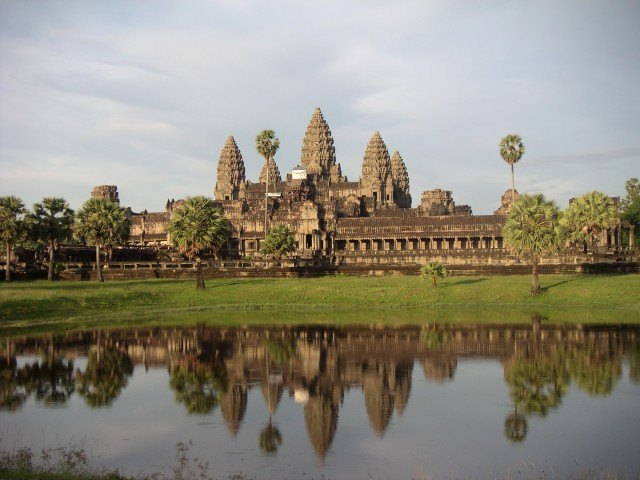The Evolution of the Tour de France Over the Years
Since its inception in 1903, the Tour de France has undergone a remarkable transformation, evolving into one of the most prestigious cycling events in the world. What began as a modest race aimed at boosting the sales of a struggling newspaper has blossomed into a grand spectacle, drawing millions of spectators and participants from around the globe. Understanding the historical evolution of the Tour de France offers a fascinating glimpse into not only the sport of cycling but also the culture, technology, and geography of France itself.
The Birth of a Legend
The Tour de France first took place from July 1 to July 19, 1903. The inaugural race featured a grueling route of 2,428 kilometers (about 1,509 miles), split into six stages. Organizers, led by the French newspaper L’Auto, aimed to create a sensational event to garner readership. The idea was revolutionary: combine sports, adventure, and the spirit of competition. Cyclists faced incredible challenges, including rough terrain and limited technology. The winner, Maurice Garin, completed the race in just over 94 hours, a feat that set the tone for future competitions.
In those early years, the Tour de France race development was marked by a lack of formal rules. Participants faced not only physical challenges but also numerous logistical hurdles. The race routes often included mountain passes and unpaved roads, which added to the excitement but also posed significant dangers. As a result, the race attracted not only elite athletes but also adventurous spirits willing to tackle the unknown.
The Golden Age: 1920s and 1930s
The Tour de France began to gain popularity in the 1920s and 1930s, as cycling became a national pastime in France. This era saw the introduction of innovative changes that enhanced the competition and broadened its appeal. The famous yellow jersey, or “maillot jaune,” was introduced in 1919, serving as a symbol of leadership and achievement. This vibrant garment has since become synonymous with the race, inspiring generations of cyclists to chase glory.
During these decades, the growth of the Tour de France was further propelled by the emergence of legendary cyclists. Names like Fausto Coppi and Gino Bartali captivated audiences with their rivalries and stunning performances. This era also marked the introduction of team strategies, allowing cyclists to support one another and work together to conquer challenging stages. The camaraderie among teams began to reshape the landscape of competitive cycling, laying the groundwork for future races.
The Post-War Era: Resilience and Innovation
Following World War II, the Tour de France witnessed significant changes that mirrored the rebuilding of France itself. The race resumed in 1947, and it quickly became a symbol of national pride and resilience. Innovations in technology also began to play a pivotal role during this time. Advancements in bicycle design and materials revolutionized the sport, allowing for lighter, more aerodynamic bikes that enhanced performance.
The 1950s and 1960s saw the rise of iconic figures like Jacques Anquetil, who became the first rider to win the Tour five times. This period also introduced new challenges, such as the infamous mountain stages in the Pyrenees and the Alps, which tested cyclists’ endurance and skill. These developments not only heightened the competition but also captivated audiences, further cementing the Tour de France as a cultural phenomenon.
Modernization and Globalization: 1970s to Present
As the world entered the late 20th century, the Tour de France through the decades began to reflect a more globalized approach. The race expanded its reach, attracting international riders and teams, transforming the event into a global competition. The inclusion of foreign riders, such as American Lance Armstrong and Italian Marco Pantani, introduced new strategies and styles to the race.
Technological advancements continued to evolve, with the introduction of sophisticated training methods, nutrition, and performance analytics. The race also embraced live television coverage, allowing fans worldwide to witness the drama unfold in real time. This shift not only broadened the audience but also increased the pressure on cyclists to perform at their best.
However, the Tour de France has also faced challenges in the form of controversies, particularly regarding doping scandals. The fight against performance-enhancing drugs has become a significant focus, prompting stricter regulations and a commitment to uphold the integrity of the sport. These measures have been essential in maintaining the race’s reputation and ensuring a level playing field for all participants.
Celebrating the Journey
Today, the Tour de France is a vibrant celebration of cycling, culture, and camaraderie. Each year, thousands of spectators line the routes, eager to witness the spectacle of endurance and determination. The race now encompasses 21 stages, covering over 3,500 kilometers (approximately 2,175 miles), and includes a mix of flat, hilly, and mountainous terrain.
The event has also evolved to embrace environmental consciousness, with initiatives aimed at promoting sustainability and reducing the carbon footprint associated with the race. Efforts to utilize renewable energy and promote cycling as a sustainable mode of transportation reflect the changing values of society and the importance of protecting the planet.
The Future of the Tour de France
As the Tour de France continues to evolve, its commitment to innovation, inclusivity, and sustainability remains paramount. The race serves as a beacon of inspiration for cyclists of all levels and a testament to the enduring spirit of competition. Future generations will undoubtedly witness further changes, as new technologies and cultural shifts shape the landscape of this iconic event.
The historical evolution of the Tour de France reveals not only the story of a race but also the narrative of a nation. From humble beginnings to a global phenomenon, the Tour de France encapsulates the essence of cycling while reflecting the broader changes in society, technology, and culture. Each year, as the cyclists roll out from the start line, they carry with them a legacy that continues to inspire and captivate. Whether competing for the yellow jersey or simply enjoying the beauty of the French countryside, the Tour de France remains a celebration of life, passion, and the pursuit of excellence.




